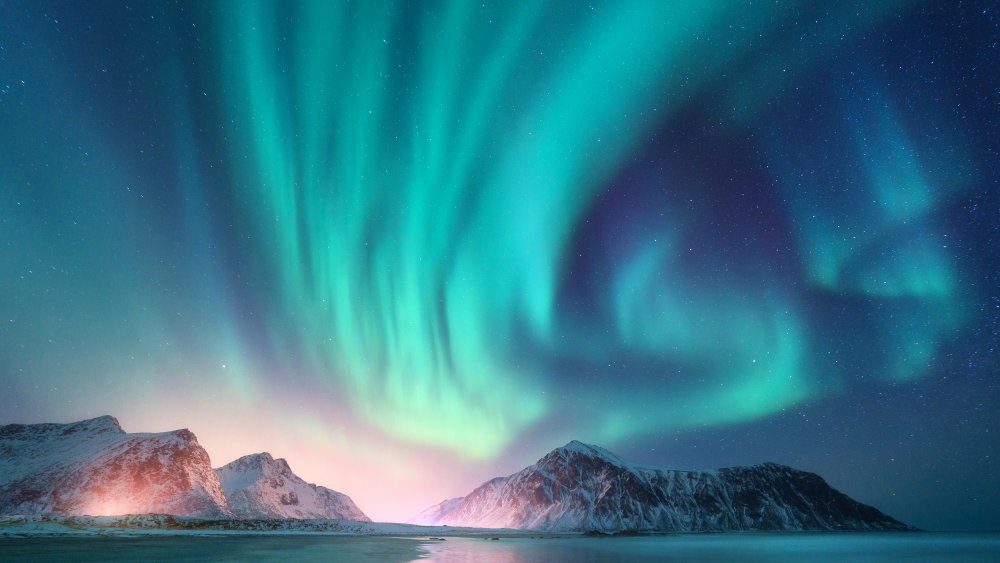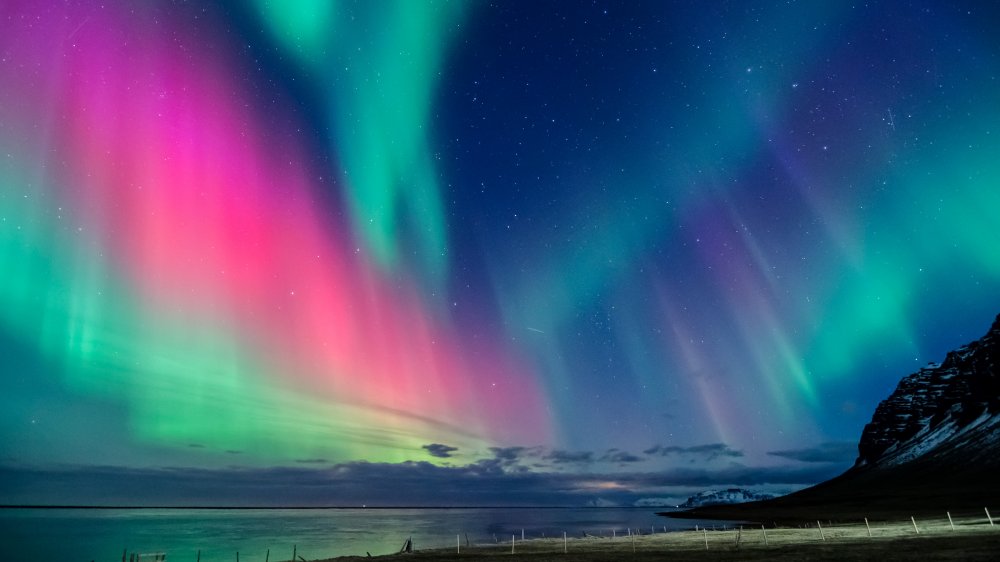Here's How Northern Lights Get Their Color
What causes the seemingly otherworldly, colorful display known as the Northern Lights, or, more formally, the Aurora borealis in the north and Aurora australis in the south? Per Space.com, the boiling and bubbling of the sun causes particles to escape from its surface via sunspots, which appear when the "sun's many magnetic fields distort and twist as our parent star rotates on its axis" and burst. Particles of plasma, or solar wind, careen into space and take 40 hours to reach the earth. When they arrive "they can cause the dramatic displays known as the aurora borealis."
The different colors are caused by they types of gases with which the plasma interact as well as the types of collisions between gas and plasma and the altitude at which the two collide. Space.com notes "when the particles collide with oxygen, yellow and green are produced. Interactions with nitrogen produce red, violet, and occasionally blue colors." Atomic nitrogen causes a blue display, while molecular nitrogen sends purple lights out into the atmosphere. As for altitude, "green lights typically in areas appear up to 150 miles (241 km) high, red above 150 miles; blue usually appears at up to 60 miles (96.5 km); and purple and violet above 60 miles."
The many legends of the aurora borealis
Space.com notes that "[f]or millennia, the lights have been the source of speculation, superstition and awe"; cave paintings dating back 30,000 years portray the aurora borealis. Many great scientists and thinkers, including Aristotle, Descartes, Goethe and Halley, have discussed the northern lights in their works. The use of the term "aurora borealis" to describe the phenomenon dates to astronomer Galileo Galilei, who in 1616 "[took] the name of the mythical Roman goddess of the dawn, Aurora, and the Greek name for wind of the north, Boreas."
Canada's Northern Lights Centre explains that legends about the lights exist throughout history; in medieval times, "the occurrences of auroral displays were seen as harbingers of war or famine." The Maori of New Zealand as well as people in Europe and North America believed that the lights were "reflections from torches or campfires." Wisconsin's Menominee Indians thought that the lights represented "manabai'wok (giants) who were the spirits of great hunters and fishermen." The Inuit of Alaska "believed that the lights were the spirits of the animals they hunted: the seals, salmon, deer and beluga whales. Other aboriginal peoples believed that the lights were the spirits of their people."

